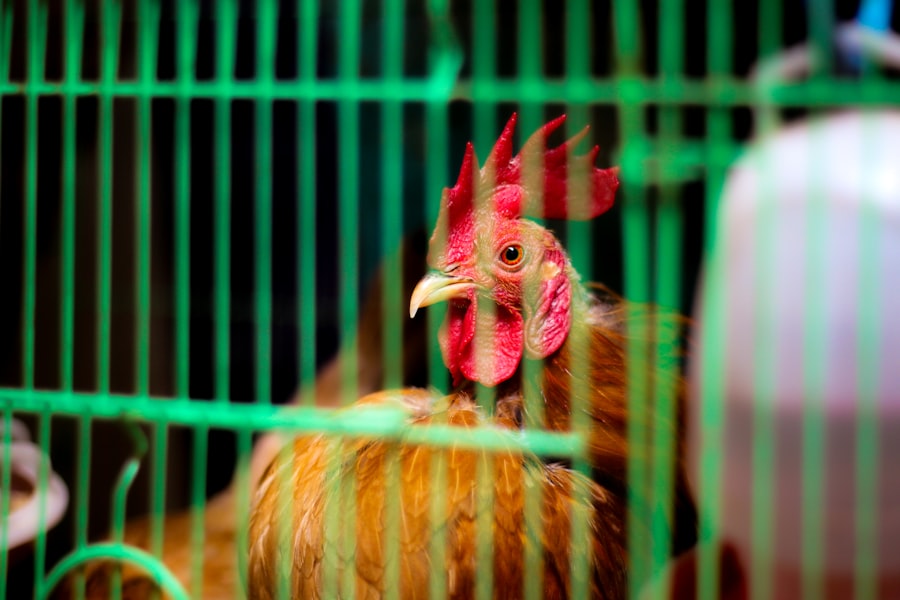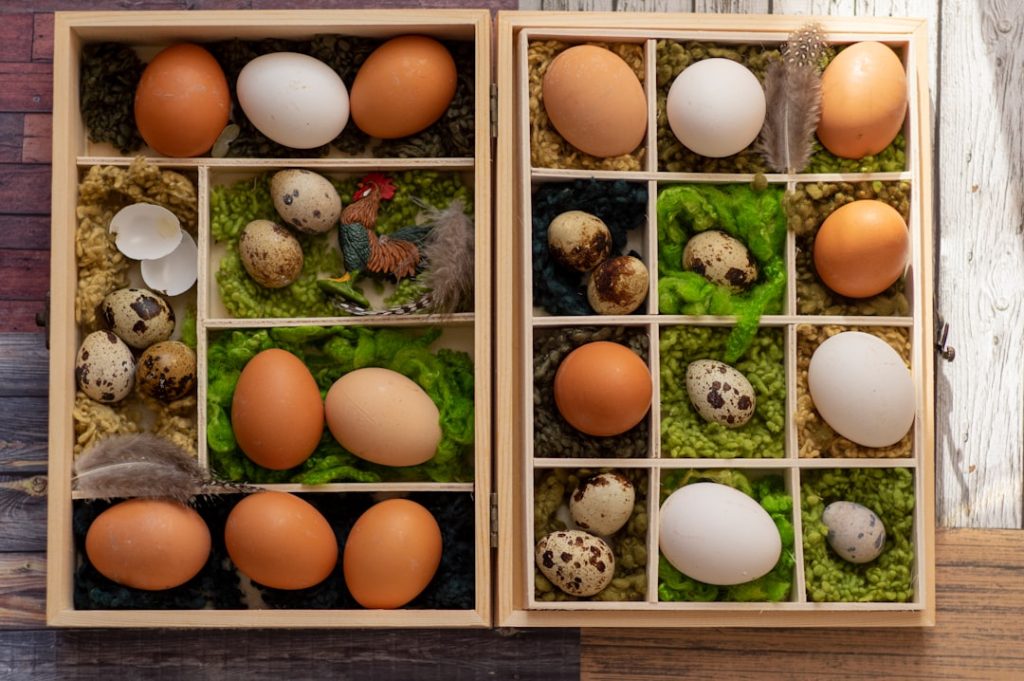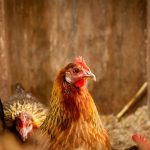Initial setup costs for a chicken farm include several key components. A suitable coop and run are essential, which can be either constructed or purchased pre-made. Necessary equipment includes feeders, waterers, and nesting boxes to provide for the chickens’ basic needs.
Secure fencing is required to protect the flock from predators. The cost of acquiring the chickens themselves, whether as chicks or mature hens, must also be factored into the initial investment. Additional setup expenses may include tools and equipment for coop maintenance, such as rakes, shovels, and wheelbarrows.
For those planning to sell eggs or meat, packaging materials and marketing costs should be considered. It is crucial to thoroughly assess all these initial expenses before establishing a chicken farm to ensure adequate financial preparation.
Table of Contents
- 1 Ongoing Maintenance Expenses
- 2 Feed and Bedding Costs
- 3 Veterinary Care Expenses
- 4 Coop and Run Construction Costs
- 5 Egg Incubation and Brooding Expenses
- 6 Miscellaneous Costs and Considerations
- 7 FAQs
- 7.1 What are the initial costs of keeping chickens in Australia?
- 7.2 What are the ongoing costs of keeping chickens in Australia?
- 7.3 How much does chicken feed cost in Australia?
- 7.4 Are there any other costs associated with keeping chickens in Australia?
- 7.5 What are the potential savings of keeping chickens in Australia?
Key Takeaways
- Initial setup costs for raising chickens include purchasing a coop, feeders, waterers, and heat lamps.
- Ongoing maintenance expenses for chickens include purchasing feed, bedding, and replacing worn-out equipment.
- Feed and bedding costs can vary depending on the size of the flock and the quality of the products purchased.
- Veterinary care expenses may include vaccinations, deworming, and treatment for common poultry illnesses.
- Coop and run construction costs can vary depending on the size and materials used, but are essential for providing a safe and secure environment for the chickens.
Ongoing Maintenance Expenses
Feed and Bedding Costs
One of the most significant ongoing expenses on your chicken farm is the cost of feed for your chickens. Depending on the size of your flock, this cost can add up quickly. Additionally, you will need to regularly purchase bedding for the coop to keep it clean and comfortable for your chickens. This can include materials such as straw, wood shavings, or hay.
Veterinary Care Expenses
Another ongoing expense to consider is the cost of veterinary care for your chickens. While chickens are generally low-maintenance animals, they can still require medical attention from time to time. This can include routine vaccinations, deworming treatments, and occasional visits from a veterinarian. It’s important to budget for these expenses to ensure that your chickens remain healthy and productive.
Maintenance and Repair Expenses
Furthermore, ongoing maintenance expenses may also include the cost of replacing or repairing equipment and infrastructure on your farm. This can include things like replacing worn-out feeders and waterers, repairing fencing, or upgrading the coop and run as needed. It’s important to regularly assess the condition of your farm and budget for these ongoing maintenance expenses to keep everything running smoothly.
Feed and Bedding Costs
Feed and bedding costs are significant ongoing expenses for any chicken farm. The cost of feed will largely depend on the size of your flock and the type of feed you choose to provide. There are various options for chicken feed, including commercial pellets, crumbles, or mash, as well as organic or non-GMO options.
Additionally, some chicken farmers choose to supplement their chickens’ diet with kitchen scraps or garden produce, which can help reduce feed costs. Bedding costs are another ongoing expense to consider. The type of bedding you choose will depend on factors such as availability and cost in your area, as well as the specific needs of your flock.
Common bedding materials include straw, wood shavings, hay, or shredded paper. It’s important to regularly clean and replace bedding in the coop to maintain a healthy and comfortable environment for your chickens. To manage feed and bedding costs effectively, it’s important to carefully plan and budget for these expenses.
Consider purchasing feed in bulk to take advantage of cost savings, and explore different bedding options to find the most cost-effective solution for your farm. Additionally, consider implementing strategies to reduce waste, such as using feeders and waterers designed to minimize spillage and spoilage.
Veterinary Care Expenses
Veterinary care expenses are an important consideration for any chicken farm. While chickens are generally hardy animals, they can still require medical attention from time to time. Routine veterinary care may include vaccinations to protect against common diseases such as Marek’s disease or Newcastle disease.
Additionally, chickens may require deworming treatments to prevent parasitic infestations. In the event of illness or injury, it’s important to have a plan in place for accessing veterinary care for your chickens. This may involve finding a veterinarian who is experienced in poultry care and establishing a relationship with them before an emergency arises.
It’s also important to budget for unexpected veterinary expenses that may arise due to illness or injury in your flock. To help manage veterinary care expenses, consider implementing preventative measures to keep your chickens healthy. This can include providing a clean and comfortable living environment, practicing good biosecurity measures to prevent disease transmission, and monitoring your flock regularly for signs of illness or injury.
By taking proactive steps to maintain the health of your chickens, you can help minimize the need for costly veterinary care.
Coop and Run Construction Costs
The construction of a coop and run is one of the most significant initial setup costs for a chicken farm. The cost of building a coop and run can vary widely depending on factors such as size, materials used, and whether you choose to build it yourself or hire a contractor. If you have the skills and resources to build a coop yourself, this can be a cost-effective option.
However, if you lack the necessary skills or time, hiring a professional to build a coop may be a better choice. When planning the construction of a coop and run, it’s important to consider factors such as ventilation, insulation, predator-proofing, and ease of cleaning. These considerations can impact both the initial construction costs as well as ongoing maintenance expenses.
Additionally, it’s important to ensure that the coop and run are appropriately sized for the number of chickens in your flock, providing adequate space for roosting, nesting, and outdoor exercise. To manage coop and run construction costs effectively, it’s important to carefully plan and budget for these expenses. Consider obtaining multiple quotes from contractors if you choose to hire out the construction work, and explore different materials options to find the most cost-effective solution for your farm.
Additionally, consider investing in quality materials that will stand up to the elements and provide a safe and comfortable environment for your chickens.
Egg Incubation and Brooding Expenses

Egg Incubation Expenses
The cost of an incubator can vary widely depending on factors such as size, capacity, and features such as automatic turning and temperature control. Additionally, you will need to invest in supplies such as hatchery trays, egg turners, and thermometers to ensure successful incubation.
Brooding Expenses
Once chicks hatch, they will need a warm and secure brooding area equipped with heat lamps or brooders to maintain the appropriate temperature. Brooding supplies such as chick feeders and waterers will also be necessary to provide for the needs of the young chicks.
Managing Expenses Effectively
To manage egg incubation and brooding expenses effectively, consider investing in quality equipment that will provide reliable results over time. Additionally, explore options for purchasing used equipment or borrowing from other chicken farmers in your area to reduce initial costs. Proper planning and preparation can help ensure successful egg incubation and brooding while minimizing unnecessary expenses.
Miscellaneous Costs and Considerations
In addition to the major expenses outlined above, there are several miscellaneous costs and considerations to keep in mind when starting a chicken farm. These may include permits or licenses required by local regulations for keeping chickens on your property. Additionally, you may need to invest in insurance coverage for your farm to protect against potential liabilities such as property damage or injury.
Other miscellaneous costs may include investing in tools and equipment for maintaining your farm, such as egg collection baskets, egg washing supplies, or poultry processing equipment if you plan on selling meat from your chickens. Furthermore, it’s important to consider ongoing education and training opportunities related to poultry farming to stay informed about best practices and industry developments. It’s also important to consider potential income streams from your chicken farm when evaluating costs and considerations.
Whether you plan on selling eggs, meat, or other poultry products such as feathers or manure, it’s important to carefully plan for marketing efforts and packaging materials to support these income streams. In conclusion, starting a chicken farm involves several initial setup costs as well as ongoing maintenance expenses that must be carefully considered and budgeted for. By taking proactive steps to plan for these expenses and manage them effectively over time, you can help ensure the success of your chicken farm while maintaining financial stability.
If you’re considering keeping chickens in Australia, you may be wondering how much it will cost. According to a related article on Poultry Wizard, the cost of keeping chickens in Australia can vary depending on factors such as the size of the coop, feed, and other supplies. To learn more about the cost of keeping chickens in Australia, you can check out the article here.
FAQs
What are the initial costs of keeping chickens in Australia?
The initial costs of keeping chickens in Australia include purchasing a chicken coop, feeders, waterers, bedding, and of course, the chickens themselves. These costs can vary depending on the size and quality of the items purchased.
What are the ongoing costs of keeping chickens in Australia?
The ongoing costs of keeping chickens in Australia include purchasing chicken feed, bedding, and any necessary medical care for the chickens. Additionally, there may be costs associated with maintaining the chicken coop and run.
How much does chicken feed cost in Australia?
The cost of chicken feed in Australia can vary depending on the type and quality of the feed. On average, a 20kg bag of chicken feed can cost between $15 to $30.
Are there any other costs associated with keeping chickens in Australia?
Other potential costs associated with keeping chickens in Australia may include purchasing supplements, treats, and any necessary equipment for maintaining the chicken coop and run.
What are the potential savings of keeping chickens in Australia?
Keeping chickens in Australia can lead to potential savings on eggs, as well as the benefit of having access to fresh, organic eggs. Additionally, chickens can help with pest control in the garden, reducing the need for chemical pesticides.
Meet Walter, the feathered-friend fanatic of Florida! Nestled in the sunshine state, Walter struts through life with his feathered companions, clucking his way to happiness. With a coop that’s fancier than a five-star hotel, he’s the Don Juan of the chicken world. When he’s not teaching his hens to do the cha-cha, you’ll find him in a heated debate with his prized rooster, Sir Clucks-a-Lot. Walter’s poultry passion is no yolk; he’s the sunny-side-up guy you never knew you needed in your flock of friends!







